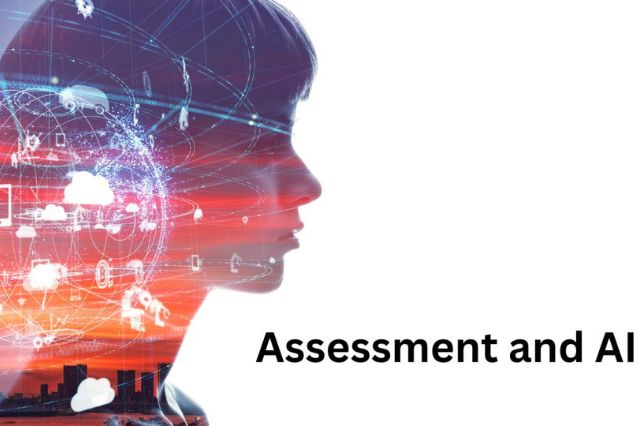Tech
Why do Mobile Apps Have Higher Conversion Rates than Websites?


Digital marketing experts may have told you that every business needs a mobile-friendly website. Agreed, right? Why is its conversion rate lower than that of mobile apps? A mobile presence has become essential for every business as the world moves rapidly towards mobile. Approximately 53% of mobile traffic worldwide comes from mobile devices, so developing apps for mobile devices is essential.
It can be confusing for business owners to decide whether to focus on mobile apps or websites. You must consider certain factors when choosing between the two, such as target audiences, budget, and intent. As many mobile app development services provider, you can choose one.
Why is Mobile App Development Conversion Rates Better than a Website?
The development of mobile apps not only makes our lives more convenient but also improves conversion rates for businesses. We will discuss why mobile apps are becoming the medium for businesses to reach their target audiences.
- Availability of Features
You can access specific users’ smartphones’ basic features through mobile apps downloaded from Play Store or App Store. Make your business app more engaging by using GPS, a camera, contacts, etc. The camera feature can be used to snap an image of the bill of receipt so that the user can get cash back from your app.
As a result, users can upload any image with ease using mobile apps, increasing the likelihood that they will return to your app. By leveraging device features, mobile app development increases the chances of your business staying connected to visitors, subscribers, and users.
- Improve Communication
In order to generate revenue for your business, you need to engage your targeted audience as much as possible. A well-designed mobile app with notifications, in-app updates, and 24/7 customer support can make people feel valued in the battle between mobile apps and websites. A conversion rate can also be increased if you suggest products or services based on visitors’ interests, preferences, and behavior.
- User Preferences
Mobile apps cover a significant percentage of internet traffic, according to recent reports. A mobile app is preferred over a mobile website by users when comparing mobile app usage vs mobile website usage.
If you want to maximize conversions and expand your business outreach, then you should launch an attractive mobile app for your business. Mobile apps are also used by people as they can reach out to brands in only a few seconds.
- Offline Capabilities
One of the main differences between a mobile app and a website is the ability to access some app features offline. You might have an app for your users if you own a news agency. To access the news, users must have an internet connection.
You can allow your users to read news offline through a mobile app after downloading it. The amount of offline access you provide your users depends on your business needs and how your mobile app development is set up.
- Loading Speed & Time
Today’s web users will move back to another website if yours is slow, resulting in an increased bounce rate. A mobile app is faster than a mobile web when compared to a mobile app. A mobile app with a higher conversion rate also has a lower bounce rate and abandonment rate.
In our comparison of mobile apps and websites, we found that app stores and search engines have vastly different requirements, restrictions, and algorithms.
- Mobile Apps Offer Instant Notifications
Brands used email as their primary marketing channel 10 years ago. Nevertheless, spam-filled mailboxes have resulted in lower conversion rates as some companies abuse them. The internet users of today have become unresponsive.
However, mobile apps offer push notifications, which allow brands to communicate with their customers less intrusively. Anytime, anywhere, your audience can receive instant push notifications.
Wrap Up
Compared to websites, mobile apps have proven to be excellent marketing and communication tools for brands and organizations. However, one does not necessarily exclude the other.
In addition to native apps, brands can also benefit from custom-built websites synergistically. These assets are useful for attracting and connecting with desktop users. Your mobile app can also be downloaded more often if it has a website.
Tech
Revitalizing Batteries: The Role of Trickle Chargers


Imagine this: You’re gearing up for a long-awaited road trip, the anticipation of adventure bubbling in your veins. You hop into your car, turn the key, and… silence. The engine fails to roar to life, and frustration creeps in.
We’ve all been there, staring at our car’s lifeless battery and wondering if we should have seen it coming. The truth is, our batteries often silently endure the harsh conditions of neglect, leaving us stranded at the most inconvenient times.
But fear not, fellow wanderer! There’s a hero in the realm of battery maintenance, and its name is the trickle charger.
In this guide, we’ll delve into the world of revitalizing batteries and the crucial role that trickle chargers play in ensuring your trusty power source is always ready for action.
The Ripple Effect of Neglect: An Anecdote on Repayments
You know how it goes – the hustle and bustle of daily life often leaves little room for introspection, let alone battery check-ups. A close friend of mine, let’s call him Alex, learned this lesson the hard way.
Alex, an adventurous soul, was planning a cross-country road trip. Excitement hung in the air as he loaded up his car with gear, eager to hit the open road.
Just as the sun dipped below the horizon and the road stretched out before him, Alex turned the key, only to be met with a disheartening silence. His car had succumbed to the merciless grip of a neglected battery.
As he waited for roadside assistance, he couldn’t help but reflect on the repayments he had overlooked – those moments when he could have spared a few minutes to check on his car’s life force.
The Dance of Resuscitation: Understanding Trickle Chargers
Now, picture this: A device so unassuming, yet so powerful that it could breathe life back into a seemingly lifeless battery. Enter the smart car battery charger, your battery’s best friend.
Unlike conventional battery chargers that unleash a torrent of power, potentially causing damage, trickle chargers perform a delicate dance, replenishing your battery with a slow, steady stream of energy.
Trickle chargers work like gentle caretakers, ensuring your battery stays at an optimal charge without the risk of overcharging. They are the unsung heroes that quietly toil away, preventing your battery from falling into the clutches of premature failure.
The next time your battery stares into the abyss of depletion, the trickle charger will be there, ready to revive it with a nurturing touch.
The Dance of Resuscitation: An Anecdote on Prev
Let me share a personal experience – a moment when the dance of resuscitation saved the day. I own a vintage motorcycle that I cherish deeply, and it’s a sentiment shared by many who own classics.
One chilly morning, I eagerly approached my prized possession, only to find it unwilling to awaken. Panic set in as I considered the potential damage to the battery and the agony of costly replacements.
Enter the trickle charger – a small, unassuming device that, in this case, proved to be a lifesaver. I connected it to my motorcycle’s battery, and over the course of a few hours, it worked its magic.
The motorcycle roared to life, and I couldn’t help but marvel at the power of prevention. The trickle charger, in its unassuming simplicity, had prevailed, sparing me from the woes of a prematurely aged battery.
The Continuous Ballet: Maintaining Battery Health
The world of batteries is a stage, and the trickle charger is the conductor of a continuous ballet that keeps your power source in harmonious health. But how does this dance unfold, and what role does the trickle charger play in maintaining battery well-being?
Prevention is Key: Just as an ounce of prevention is worth a pound of cure, regularly using a trickle charger can prevent your battery from reaching critical levels. By maintaining a constant, low-level charge, these chargers inhibit the accumulation of damaging lead sulfate crystals, extending the life of your battery.
Avoiding Premature Aging: Batteries, like humans, age over time. However, premature aging can be averted with the careful intervention of a trickle charger. The slow, measured charging process ensures that your battery ages gracefully, avoiding the pitfalls of early deterioration.
Weathering the Elements: Extreme temperatures can take a toll on your battery. Trickle chargers act as guardians, shielding your battery from the harsh elements by providing a consistent charge that wards off the adverse effects of temperature fluctuations.
Nurturing the Heartbeat: An Anecdote on Succumbed
Let me share a cautionary tale about a friend who, unfortunately, succumbed to the harsh reality of battery neglect. Mark, an old college buddy, had a vintage car that he treasured like a family heirloom. As the years rolled on, so did the wear and tear on his car’s battery.
One winter morning, Mark’s car refused to start, the frigid temperatures proving too much for a weakened battery. Despite Mark’s attempts to jump-start it, the battery had succumbed to the ravages of neglect.
His beloved vintage car, once the epitome of automotive grace, now lay dormant, defeated by the very element it was designed to conquer.
A Symphony of Revitalization
In the grand symphony of automotive adventures, your battery plays a crucial role as the heartbeat of your vehicle. Neglecting its well-being can lead to a cacophony of frustration and inconvenience. This is where the trickle charger emerges as the virtuoso, conducting a continuous ballet of revitalization.
So, dear reader, the next time you embark on a journey, spare a thought for your battery. Picture it as a performer on the stage of life, and the trickle charger as the guardian angel, ensuring its graceful dance continues.
Repayments of attention and care may seem trivial, but in the grand narrative of your automotive story, they make all the difference.
Invest in a trickle charger, nurture your battery, and let the symphony of revitalization echo through the corridors of your vehicular adventures.
After all, a well-tended battery is not just a power source; it’s the heartbeat of your journey, pulsating with life and ready to carry you to places unknown.
Tech
The Role of AI in Video Games


In this modern era, with the help of Artificial intelligence (AI), Video games have become increasingly sophisticated and exhilarating, for all players around the world.
It’s similar to having a brain that assists game characters in decision making, and building game settings. However, AI isn’t limited to games; it’s also revolutionizing the way we engage with casino games such, as baccarat, in several ways.
In this article we will delve into how artificial intelligence (AI) enhances the thrill and complexity of video games. We will also discuss the advancements that AI has already brought to gaming including the creation of AI generated graphics, music and other elements.
So, let’s dive in and discover how AI is transforming our world for the better!
AI in Video Game Characters
AI, in video games, has the capability to design behavior, for computer controlled characters. These characters, display a multitude of actions, including combat skills, decision making abilities and emotional expressions.
Pathfinding and Navigation; AI technology plays a role, in enabling game characters, to navigate and move within the game world. Through algorithms they can find paths without encountering any obstacles, that would hinder their movement.
Decision Making; Moreover AI empowers these characters to make choices based on scenarios. For instance when you come across a computer controlled character while playing a game the AI determines whether they will be friendly attempt to escape or propose an agreement with you.
Emotional AI; in games AI enables characters to display emotions that are influenced by how you treat them. Games like “The Sims” and “Red Dead Redemption 2” utilize AI technology, to infuse emotions into the gameplay resulting in an immersive and vibrant gaming experience.
AI for Dynamic Gameplay


Artificial intelligence (AI) not only enhances various aspects of games. But also plays a significant role, in making them more enjoyable. By incorporating AI systems into games they can dynamically adapt as you play creating an thrilling experience.
Adapting Difficulty Levels; one fascinating aspect of AI is its ability to adjust the difficulty level of a game based on your performance. It intelligently observes how you’re progressing and modifies elements to keep you engaged without becoming too frustrated. This way you can fully immerse yourself in the game while still having a time.
Generating Procedural Content; another remarkable application of AI is its capability to generate game worlds on the fly. As you explore the game AI algorithms can create landscapes, cities and dungeons that are unique to each playthrough. Games like “Minecraft” and “No Mans Sky” brilliantly leverage this technology to provide players, with ever changing realms.
AI in Game Testing and Quality Assurance
Making a game is hard, and finding and fixing problems is a big job. AI can help with this. It can spot things like mistakes in how objects in the game touch, weird graphics, or when the game doesn’t run smoothly. AI can find these problems faster and more accurately than people can.
AI Generated Content
Artificial intelligence (AI) has the ability to create forms of content such, as music, art and written materials for games. This not accelerates the game development process. Also reduces costs associated with it.
AI Generated Music; Music plays a role in games. AI can generate music that perfectly complements the games events. For instance during battles or thrilling moments the music becomes more exhilarating. Games like “Crypt of the NecroDancer” utilize AI technology for this purpose.
AI Generated Art; AI contributes to the creation of artwork for games including textures, character designs and entire game worlds. This proves beneficial, for game developers who may have limited resources to invest in professional artwork.
The Future of AI in Video Games
As technology improves AI will have an impact on the world of gaming. Characters will appear realistic game environments will become more dynamic. Stories will become more captivating. With the help of AI games will become more thrilling by enhancing graphics, physics and visual aesthetics.
Enhanced Realism; AI advancements will contribute to the realism of video games. Characters will exhibit behavior game environments will evolve dynamically. Storytelling will become more immersive. Players can anticipate a level of engagement as AI powered graphics, physics simulations and animation technologies progress.
Advanced Game Narrative; the realm of narrative generation powered by AI has a future, in the world of video games. By employing AI algorithms that create storylines based on player decisions each playthrough can present an engaging experience. This has the power to transform storytelling in games, offering players immersive narratives that captivate their attention.
AI Assisted Game Design; in the future AI may take on a role in game design. With the aid of AI powered development tools designers could create game mechanics, levels and puzzles efficiently than before. This would enable studios to craft content rich games despite limited resources.
Personalized Experiences; AIs role, in tailoring gaming experiences to players is set to continue growing. Game environments, characters and obstacles will dynamically adjust to match the preferences and playstyle of each player. This high level of customization ensures that players stay engaged and thrilled as games become more attuned, to their desires and skills.
Ethical and Social Considerations
Artificial Intelligence, (AI), has the potential to enhance gaming experiences. It also raises some concerns. One of these concerns is the possibility of AI creating games that’re mean or unfair. It is crucial for game developers, to exercise caution, in utilizing AI to ensure that games remain enjoyable for all players.
In employment within the gaming industry the rise of (AI) could bring about several changes; and some roles that were previously necessary might become obsolete, as AI is capable of performing those tasks.
Wrapping up
In short, AI is playing a crucial role, and in the world of video games, it is enabling characters to behave like individuals enhancing gameplay enjoyment and visual appeal of game worlds.
As technology progresses AI will continue to enhance games by providing experiences. However game developers must exercise caution in their use of AI to ensure that games remain enjoyable, for all players.
Thank you! For reading this article thoroughly!
Have questions about AI in gaming? Leave them in the comments. We’re here to answer!
Tech
Embracing Authentic Assessment in an AI-Driven World


In today’s rapidly evolving educational landscape, the integration of Artificial Intelligence (AI) tools has become inevitable. These tools, such as ChatGPT, are transforming various aspects of learning, from content creation to classroom interactions.
However, as AI continues to shape the future of education, educators and institutions are confronted with a crucial question: How can we ensure that learning remains meaningful and students acquire the skills they need to thrive in an AI-enabled world?
Authentic Assessment: Bridging the Gap
To understand the path forward, we must first explore the concept of authentic assessment. But what exactly is authentic assessment?
Authentic assessment involves evaluating students through activities that require them to apply their knowledge and skills to real-world scenarios. It mirrors the tasks and skills they will encounter in their future careers, moving beyond the confines of traditional assessments that focus on memorization.
Traditional vs. Authentic Assessment
Traditional assessments, like multiple-choice quizzes and standardized tests, provide a snapshot of a student’s knowledge at a specific moment. While these assessments may be easy to grade, they often fail to assess a student’s ability to apply their knowledge in practical situations. Students can memorize information for the test but forget it shortly after.
Authentic assessments, on the other hand, encourage students to demonstrate what they’ve learned through real-world tasks. These tasks can range from debates and group projects to presentations and experiments. The aim is to determine how well students can transfer their classroom learning to authentic scenarios they’ll face in their careers.
The Limitations of Traditional Assessments
Traditional assessment methods may be straightforward to administer, but they are ill-suited for evaluating students’ real-world skills. Employers today seek graduates who possess critical thinking, communication, collaboration, problem-solving, leadership, and presentation skills. Unfortunately, traditional assessments often fall short of nurturing and assessing these abilities.
According to the NACE Job Outlook Study, 57% of employers believe that recent graduates lack proficiency in these crucial skills. Integrating AI-generated content into traditional assessments exacerbates the problem, as it fails to address these skill gaps.
The Shifting Educational Landscape
In the face of these challenges, the educational landscape is undergoing a transformation. Higher education administrators and professors are recognizing the need to shift from traditional assessment methods toward more authentic strategies.
Examples of Authentic Assessment
Authentic assessment takes various forms, promoting hands-on, interactive learning experiences. These assessments can include:
Presentations: Students present their research or findings to the class, followed by Q&A sessions.
Collaborative Projects: Group assignments that require teamwork, problem-solving, and communication.
Peer Feedback: Students assess and provide feedback on each other’s work, fostering a deeper understanding.
Video Assignments: Recording presentations, interviews, or demonstrations, allowing students to showcase their skills beyond written assignments.
Authentic assessments encourage students not only to absorb knowledge but also to apply it, enhancing their critical thinking and problem-solving abilities.
The AI Generation vs. AI Detection Battle
As AI continues to evolve, institutions and educators face an ongoing battle: AI generation versus AI detection. Some professors have explicitly banned AI tools like ChatGPT to combat academic dishonesty. They argue that AI-generated content constitutes plagiarism.
However, this approach has limitations, as AI detection tools are far from foolproof. AI-generated text can easily evade detection, making it unreliable for maintaining academic integrity.
The Pragmatic Approach
Some educational institutions are taking a pragmatic stance. Instead of banning AI tools, they embrace them as part of the educational process. Professors require students to use AI tools like ChatGPT but in a controlled and structured manner.
For instance, students can leverage AI tools to generate ideas for class projects, which are then scrutinized through group discussions and further AI prompts. This approach transforms AI into a virtual brainstorming tool, enhancing creativity and ideation.
The Role of Video in Authentic Assessment
One powerful solution that aligns with authentic assessment is video-based assessment software. Video assignments offer several advantages:
Practice and Self-Reflection: Video-based assignments allow students to practice and review their work before submission, fostering self-reflection and enhancing memory permanence.
Collaboration: Peer grading and feedback become more accessible, exposing students to diverse perspectives and alternative approaches.
Efficiency: Educators can efficiently evaluate student work and provide detailed, actionable feedback. Video-based assessments streamline grading and save time.
Long-Term Learning: Authentic assessment through video promotes ongoing learning, critical thinking, and problem-solving, preparing students for real-world challenges.
Embracing Authentic Assessment
In an AI-driven world, education must adapt to ensure meaningful learning and skill development. Authentic assessment serves as a guiding light, offering a pathway to nurture real-world competencies. It encourages students to apply their knowledge, fostering critical thinking, creativity, and collaboration.
While the AI generation versus AI detection battle rages on, educators must explore innovative ways to integrate AI tools into the learning process. By combining AI capabilities with authentic assessment techniques, institutions can empower students to excel in an ever-evolving landscape.
Education is no longer solely about absorbing knowledge; it’s about applying that knowledge effectively. Authentic assessment is the bridge that connects classroom learning to real-world success, preparing students for the challenges and opportunities of the AI-enabled world.
-



 Quotes4 years ago
Quotes4 years ago125 Inspirational Car Quotes and Captions to Celebrate Your New Car
-



 Growth4 years ago
Growth4 years ago188 Deep Hurt Quotes with Images
-



 Quotes3 years ago
Quotes3 years ago148 Romantic Love Quotes for Her from the Heart
-



 Quotes3 years ago
Quotes3 years ago185 Cute Boyfriend Quotes for the Guy You Love
-



 Quotes3 years ago
Quotes3 years ago141 Best Heart Touching Quotes about Love, Life, and Friendship
-



 Quotes3 years ago
Quotes3 years ago134 Time Flies Quotes for the Unforgettable Moments
-



 Quotes3 years ago
Quotes3 years ago122 Inspirational Kite Quotes That’ll Make You Wanna Fly Right Now
-



 Quotes4 years ago
Quotes4 years ago101 Powerful Black Women Quotes to Empower You







